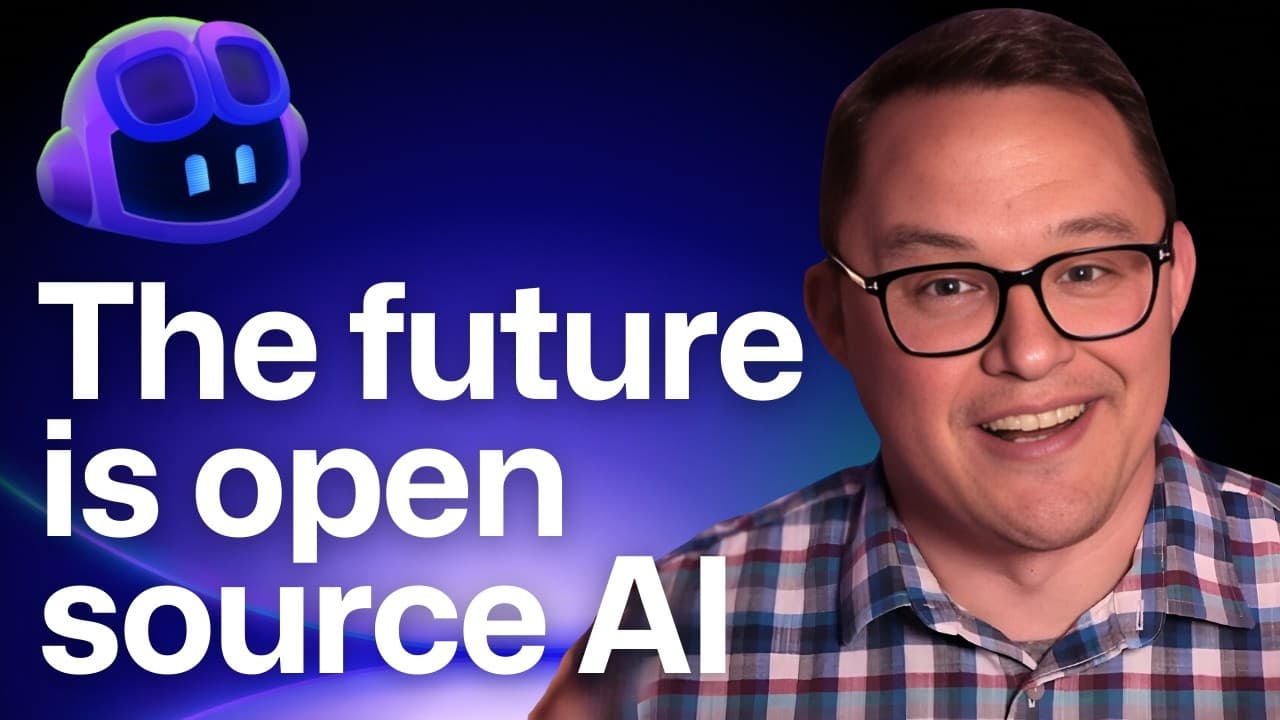GitHub Accelerator Showcase 2024 | The next wave of AI projects
25 Jul 2024 (over 1 year ago)

GitHub Accelerator Program
- GitHub is committed to accelerating human progress through developer collaboration, aiming to unlock 1 billion developers globally.
- Programs like the GitHub Accelerator provide funding, time, and expertise to support open-source ecosystems.
- The GitHub Accelerator program is showcasing projects that are building the future of Open Source AI.
- These projects represent a small portion of the innovation happening in AI on GitHub, with millions of developers contributing globally.
- The speaker congratulates the maintainers and projects selected for the GitHub Accelerator this year.
- The speaker encourages viewers to support the program and its contributors, as their teamwork fuels the Open Source AI ecosystem.
Open-Source AI Tools
- Unslot, developed by Daniel and Michael, is an open-source tool that allows for faster and more efficient fine-tuning of language models.
- Unslot reduces fine-tuning time by two times, uses 70% less memory, and maintains accuracy.
- Unslot supports popular open-source models like Llama 3, Mistral, and others, offering notebooks for various tasks.
- OpenWebUI, maintained by Tim, is a user interface for AI models designed for easy setup and offline operation.
- OpenWebUI offers various plugins and tools for LLMs, enabling function calling, message filtering, and more.
- OpenWebUI allows users to compare different models side-by-side and integrate external tools like web search for enhanced context.
- OpenWebUI empowers users to leverage their chat interaction data and collectively advance AI as a community.
- Marimo, an open-source Python notebook designed for modern machine learning, is presented as a more efficient and user-friendly alternative to Jupyter notebooks. It offers features like automatic code and output synchronization, reactive execution, and interactive data exploration.
- Dis-Card is an open-source testing platform for AI models that helps developers automate the creation of test cases and scan reports. It can identify vulnerabilities such as hallucination, sensitive information disclosure, and prompt injections.
AI for Security
- Steve Meski, based in San Francisco, California, is the maintainer of WebChat, a security tool that provides a comprehensive snapshot of a website's digital environment in 20 seconds.
- WebChat offers features like DNS information, server location, website technologies, performance metrics, SEO best practices, header information, trace route, firewall details, global rank, TLS security issues, and more.
- WebChat also checks over 20 blocklists, estimates the website's carbon footprint, and provides access to raw data for further analysis.
- An API is coming soon, allowing programmatic use of WebChat within applications.
- WebChat's code is hosted on GitHub, where documentation and getting started guides are available.
- Version 2 of WebChat is under development, featuring AI insights, a streamlined UI, a public API, a CLI utility, historical reports, and change notifications.
- HeckenBU GPT is a framework that helps security professionals use AI for hacking. It allows users to write code for hacking tasks with 50 lines of code or less. The framework was developed after the creator wondered what could go wrong if he asked ChatGPT to hack his computer.
- The video showcases how AI can be used to enhance security testing by automatically identifying vulnerabilities and exploiting them. This is demonstrated through a Linux privilege escalation attack, where AI is used to write and execute a prototype that successfully gains root access.
AI for Business
- Lang Drive is a sample library that simplifies fine-tuning open-source LLMs. It allows users to fine-tune models with a single API call. Lang Drive can be used for various tasks, such as writing emails, reviewing mortgage applications, and extracting information from documents.
- LM-Ware is a project that allows users to interact with complex structured data like CSV or Excel files using natural language. It can run on a regular laptop and allows business users to make queries and interact with large spreadsheets.
- Top-C AI is an app that allows developers to deliver great customer support using AI technologies and their own custom data. It uses OpenAI and allows developers to build a project locally and access it through a browser.
- LLM Weare, a company focused on making generative AI accessible on CPUs, introduces the concept of fine-tuning small language models for specific enterprise needs. This approach aims to address the challenges of adopting generative AI in highly regulated industries.
AI for Robotics
- D Marcos, also based in San Francisco, California, is the maintainer of Nav2, the world's most deployed autonomous mobile robot solution.
- Nav2 powers various applications, including warehouse automation, autonomous tractors, last-mile delivery, and home robots.
- Nav2 is built upon modular task servers orchestrated by the Behavior Tree Navigator (BT Navigator) to achieve robot autonomy.
- Nav2 offers state-of-the-art algorithms, Pro features, proven capabilities, and an extensible framework.
- Nav2 uses a 3D physics simulator (Gazebo) and a 3D visualization software to simulate robot platforms and visualize sensor data and internal state information.
- Nav2 allows users to command and control the system visually, enabling robots to navigate and avoid obstacles while maximizing behavioral objective functions.
- Extensive developer and user documentation is available on Nav2.org.
AI for 3D Content Creation
- Aame is a tool that makes creating 3D graphics more accessible. It provides a starting point that allows users to create interactive 3D objects within five seconds. Aame is accessible on various devices, including desktops, laptops, mobiles, VR, and AR headsets.
- Generative AI workflows will make Aame even more accessible, allowing users to create 3D models using natural language. Users can describe the object they want, and the corresponding 3D model will automatically integrate into their simulation.